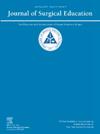以跨学科教育干预改善鼻胃管管理。
IF 2.1
3区 医学
Q1 EDUCATION, SCIENTIFIC DISCIPLINES
引用次数: 0
摘要
目的:本质量改进计划的目的是确定在医疗外科楼层实施教育干预是否可以减少鼻胃管(NGT)故障的数量,并提高护理人员对NGT管理的信心。设计:在为期4周的基线监测期间,在医疗外科楼层进行每日NGT评估。故障的ngt被记录在案。通过调查评估护理人员在教育干预前后对NGT功能的理解程度。干预措施包括由一名高级外科住院医生亲自为护理人员提供10分钟的服务,并在患有NGT的患者的房间里明显放置一张“NGT小cheat Sheet”。干预后监测包括4周的每日NGT评估,以及对护理人员的干预后调查。采用Fisher精确检验比较干预前后的数据。环境:数据收集、在职教育和调查在一家第四教学医院的内科外科楼层和中间护理单位进行。参与者:医疗外科楼层的护理人员。结果:教育干预提高了护理人员对NGT管理的信心,减少了NGT故障。干预前后出现故障的ngt数量有统计学意义上的显著改善,干预前有11/25(44%)的ngt出现故障,而干预后有3/31(10%)的ngt出现故障(p = 0.0048)。护士在干预后对NGT功能和管理的理解也有所提高。结论:本研究提供了NGT管理问题的证据,该问题可以通过适当的教育得到改善。在本研究中,教育干预被证明是缩小这一知识差距和改善NGT管理的有效工具。减少NGT故障可能直接转化为改善患者护理,未来的研究需要评估这种NGT教育干预的短期和长期影响。本文章由计算机程序翻译,如有差异,请以英文原文为准。
Improving Management of Nasogastric Tubes With an Interdisciplinary Educational Intervention
Objective
The purpose of this quality improvement initiative was to determine whether implementation of an educational intervention on medical-surgical floors could reduce the number of malfunctioning nasogastric tubes (NGTs), as well as increase nursing staff confidence in NGT management.
Design
Daily NGT assessment was done on medical-surgical floors during a 4-week baseline surveillance period. Malfunctioning NGTs were documented. Surveys were created to assess nursing staff comprehension of NGT function before and after an educational intervention. The intervention included an in-person 10-minute in-service by a senior surgical resident for nursing staff, and an “NGT Cheat Sheet” placed visibly in the rooms of patients with NGTs. Post-intervention surveillance included 4 weeks of daily NGT assessment, as well as a post-intervention survey for nursing staff. Pre- and post-intervention data was compared using Fisher’s Exact Test.
Setting
Data collection, in-service education, and surveys were administered on medical-surgical floors and intermediate care units at a quaternary teaching hospital.
Participants
Nursing staff on medical-surgical floors.
Results
The educational intervention improved both nursing staff confidence in NGT management and decreased NGT malfunctions. There was a statistically significant improvement in the number of malfunctioning NGTs pre- and post-intervention, with 11/25 (44%) NGTs found to be malfunctioning pre-intervention, compared to 3/31 (10%) NGTs post-intervention (p = 0.0048). Nurses also demonstrated improved understanding of NGT function and management post-intervention.
Conclusions
This study provides evidence of a problem with NGT management that can be ameliorated with proper education. The educational intervention in this study proved to be an effective tool for closing this knowledge gap and improving NGT management. Minimizing malfunctioning NGTs may directly translate to improved patient care, and future studies are needed to assess both the short and long-term impact of this NGT educational intervention.
求助全文
通过发布文献求助,成功后即可免费获取论文全文。
去求助
来源期刊

Journal of Surgical Education
EDUCATION, SCIENTIFIC DISCIPLINES-SURGERY
CiteScore
5.60
自引率
10.30%
发文量
261
审稿时长
48 days
期刊介绍:
The Journal of Surgical Education (JSE) is dedicated to advancing the field of surgical education through original research. The journal publishes research articles in all surgical disciplines on topics relative to the education of surgical students, residents, and fellows, as well as practicing surgeons. Our readers look to JSE for timely, innovative research findings from the international surgical education community. As the official journal of the Association of Program Directors in Surgery (APDS), JSE publishes the proceedings of the annual APDS meeting held during Surgery Education Week.
 求助内容:
求助内容: 应助结果提醒方式:
应助结果提醒方式:


